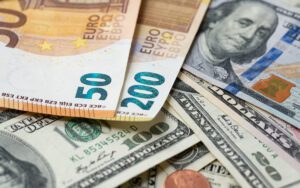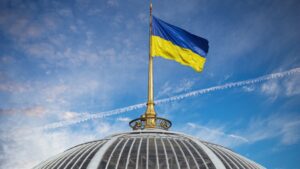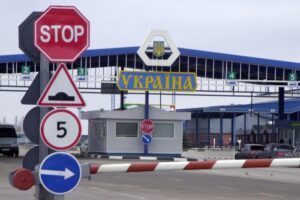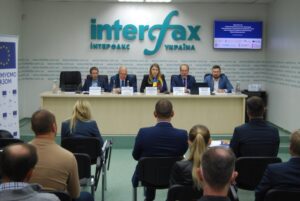
The euro exchange rate against the US dollar will fall to $0.90 in the next six months against the backdrop of the political crisis in Italy and the reduction in Russian gas supplies, 69% of MLIV Pulse poll participants believe.
In addition, only 16% of respondents believe that Europe will be able to avoid recession in the next six months, Bloomberg quoted the results of a survey of 792 respondents.
Political problems in the euro zone’s third-largest economy could also lead to a fragmentation of the bond market, investors say. Thus, 21% of respondents believe that the spread between the yields of 10-year government bonds in Italy and Germany may exceed 500 basis points, updating the maximum since 2012.
In general, 41% of participants in the survey, conducted among portfolio managers and private investors, expect the beginning of the debt crisis in the eurozone in the next six months.

Ukraine has officially completed the ratification of the Istanbul Convention and sent respective documents to Deputy Secretary General of the Council of Europe Bjorn Berge.
Secretary General of the Council of Europe Marija Pejcinovic Buric has welcomed this fact.
“I warmly welcome Ukraine’s deposit today of the instrument of ratification of the Istanbul Convention. Ukraine is the 36th state party to this landmark treaty,” she said on Twitter on Monday.
The document will enter into force on November 1, 2022.

Cardboard and Paper Company LLC (Lviv), a major Ukrainian manufacturer of cardboard tubes and sanitary and hygienic products, increased production by 42.1% in January-June compared to the same period in 2021, to UAH 501.28 million.
According to the statistics of the UkrPapir association provided to Interfax-Ukraine, in kind, over this period, the company increased the production of paper – the basis for sanitary and hygienic products – by 12%, to 3,440 tonnes, while increasing the production of toilet paper in rolls by 39%, to 2.1 million pieces.
At the same time, the output of cardboard products fell by 2.2%, to 12,840 tonnes.
According to the statistics of UkrPapir, the factory continued to work all months since the beginning of the year, reducing the production of paper and cardboard in March, but in April and May it already increased their production by 16.4% and 6.7%, respectively (compared to the same months last year), and in June by 7.7%.
Cardboard and Paper Company (before 2011 it was Lvivkartonoplast) produces goods and semi-finished products from recycled cardboard (cardboard sheets, corners, tubes) and cellulose paper (toilet paper, towels, napkins of White Line and Papero trademarks).
In 2021, the company produced products worth UAH 782.7 million, which is 46.7% more than in 2020.

On Monday, July 18, in the morning at the Krakovets checkpoint on the border with Poland, work began on the completion, in connection with which the passage of cars to leave Ukraine was temporarily suspended, the State Border Service of Ukraine reports.
“Today, July 18, at the Krakovets checkpoint, within the framework of the Open Border project, work began on the completion. In the passenger direction, a coating is being installed over the pavilions. From 8:00, the passage of cars to leave Ukraine has been temporarily suspended. buses to enter Ukraine, as well as trucks in both directions, continues,” the message said on Facebook.
Citizens planning trips to Poland are offered to choose another convenient checkpoint. Information about checkpoints and their workload can be found on the page Western Regional Directorate of the State Border Service of Ukraine – Western Border
Work at the Krakovets checkpoint will last up to 10 days.
“The work is being carried out to improve the comfort of citizens, because after the installation of the cover, people at the checkpoint will receive additional protection from heat and rain. Also, after completion, the movement of passenger buses through this checkpoint will be fully resumed,” the ministry added.

The European Commission has put forward a draft EU proposal for Ukraine to be invited to join the Common Transit Conventions (CTC) – an international framework for the customs transit of goods that ensures simplified procedures between the EU and partner countries.
“Ukraine fulfils all relevant criteria for admittance to the Conventions, including legal, structural and IT requirements,” the draft EU proposal, adopted on Friday, says.
In the draft EU position paper adopted today, the Commission takes the view that “furthermore, accession to these Conventions is foreseen in the EU-Ukraine Association Agreement and in the EU’s pre-accession strategy for Ukraine.”
The Conventions mean that goods can move much more easily between the EU and the seven so called Common Transit Countries (Norway, Iceland, Switzerland, North Macedonia, Serbia, Turkey and the UK).
In this way, the simplified rules, such as mutually recognised financial guarantees for customs transit and less controls, help to cut down on costs for EU and partner country businesses, while facilitating and boosting trade, the European Commission said in a press release.
Once endorsed by the EU Council, the EU’s position will be put forward to the highest body of the Conventions, the EU-CTC Joint Committees, made up of the EU and other CTC signatories, which can then formally invite Ukraine to join the Conventions by as early as 1 October.